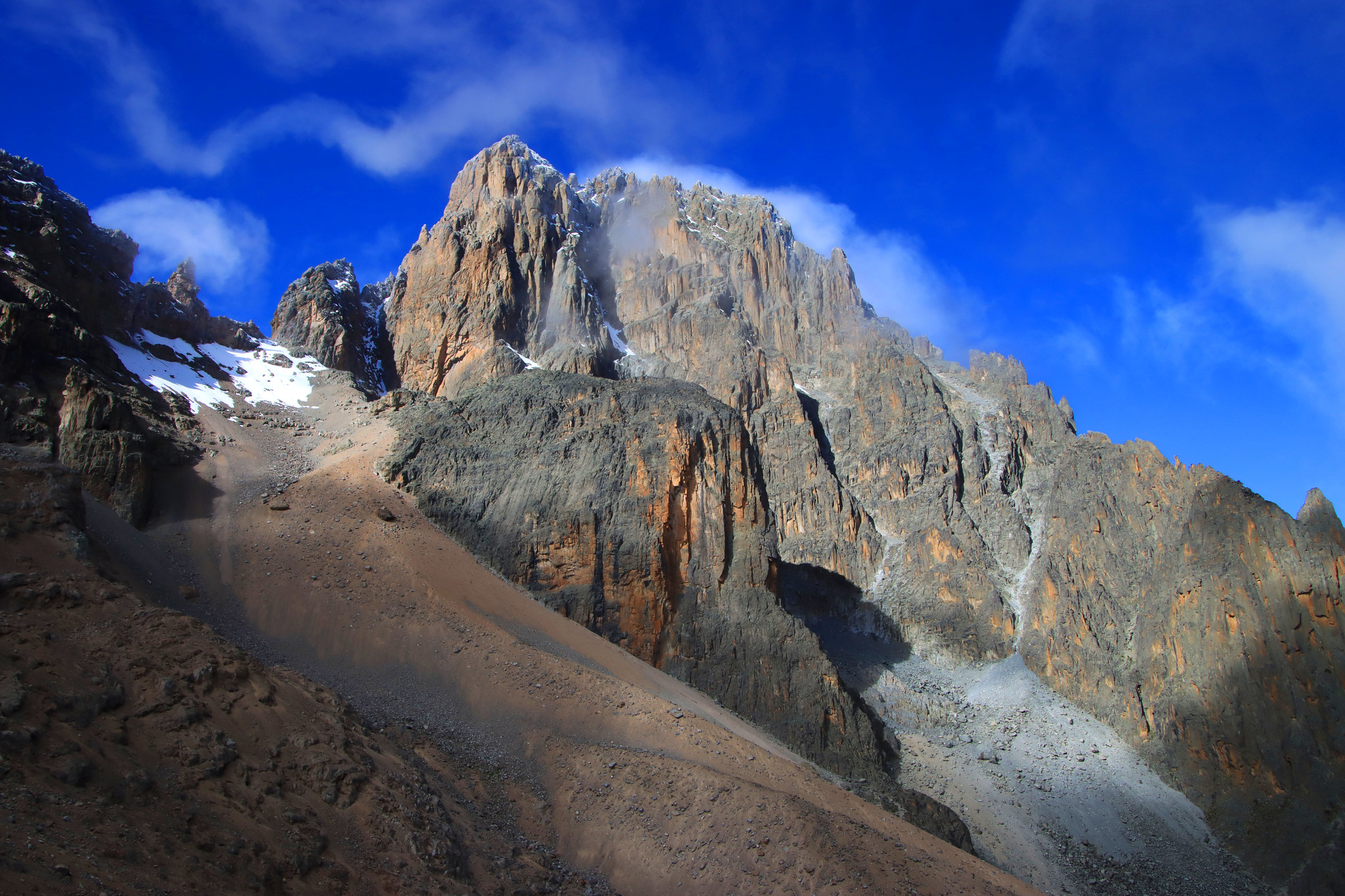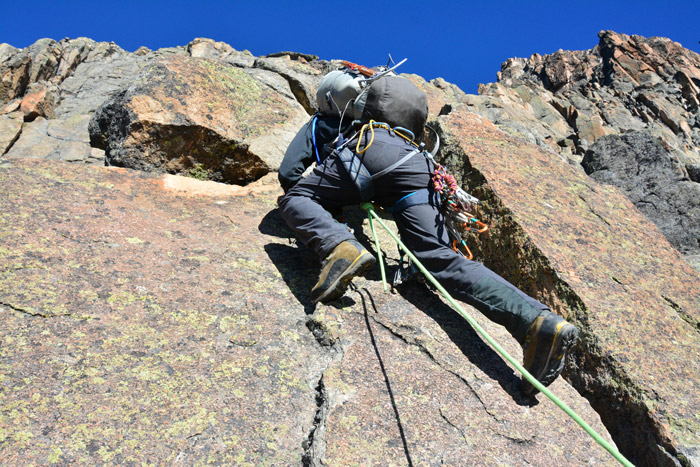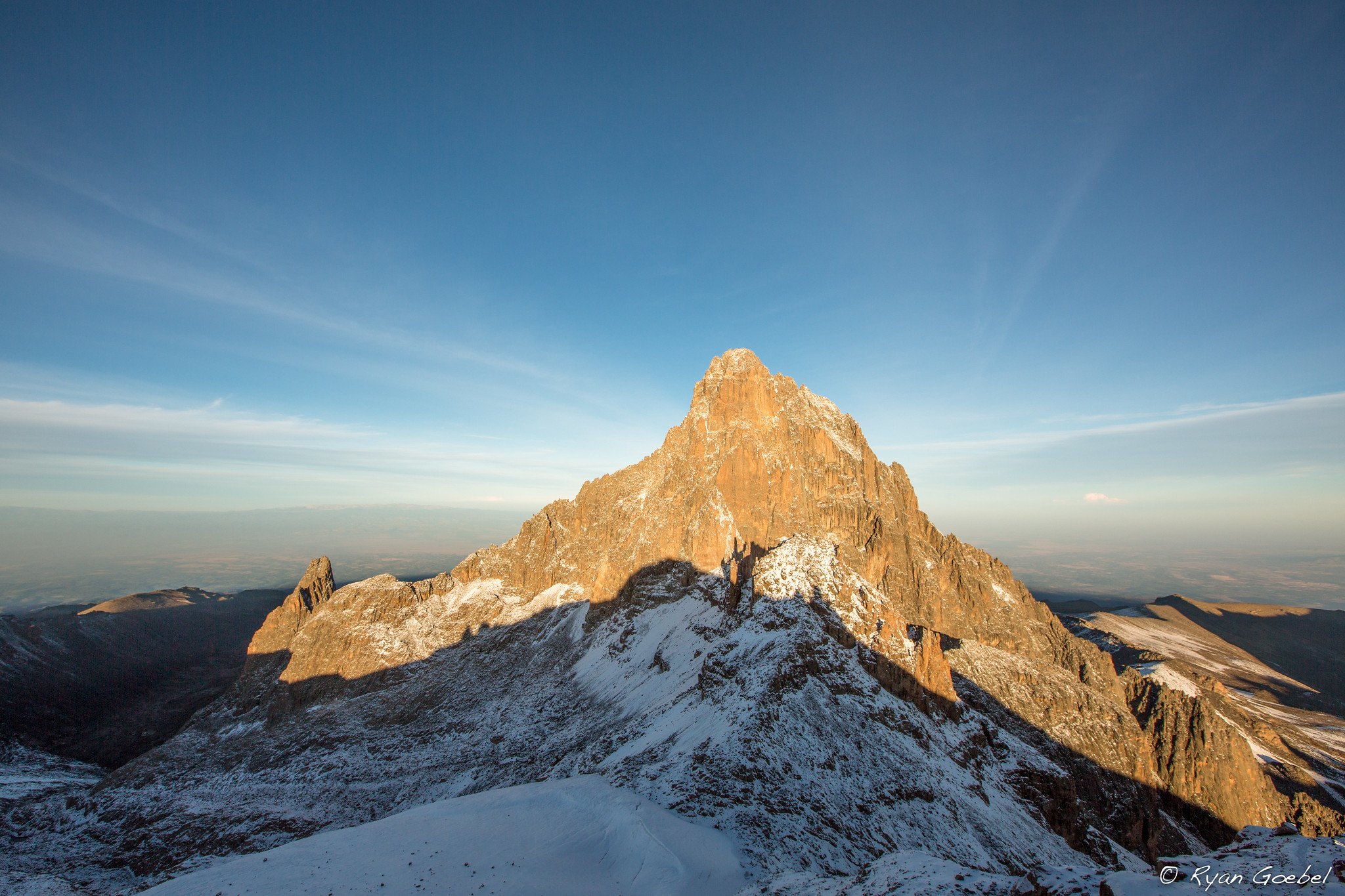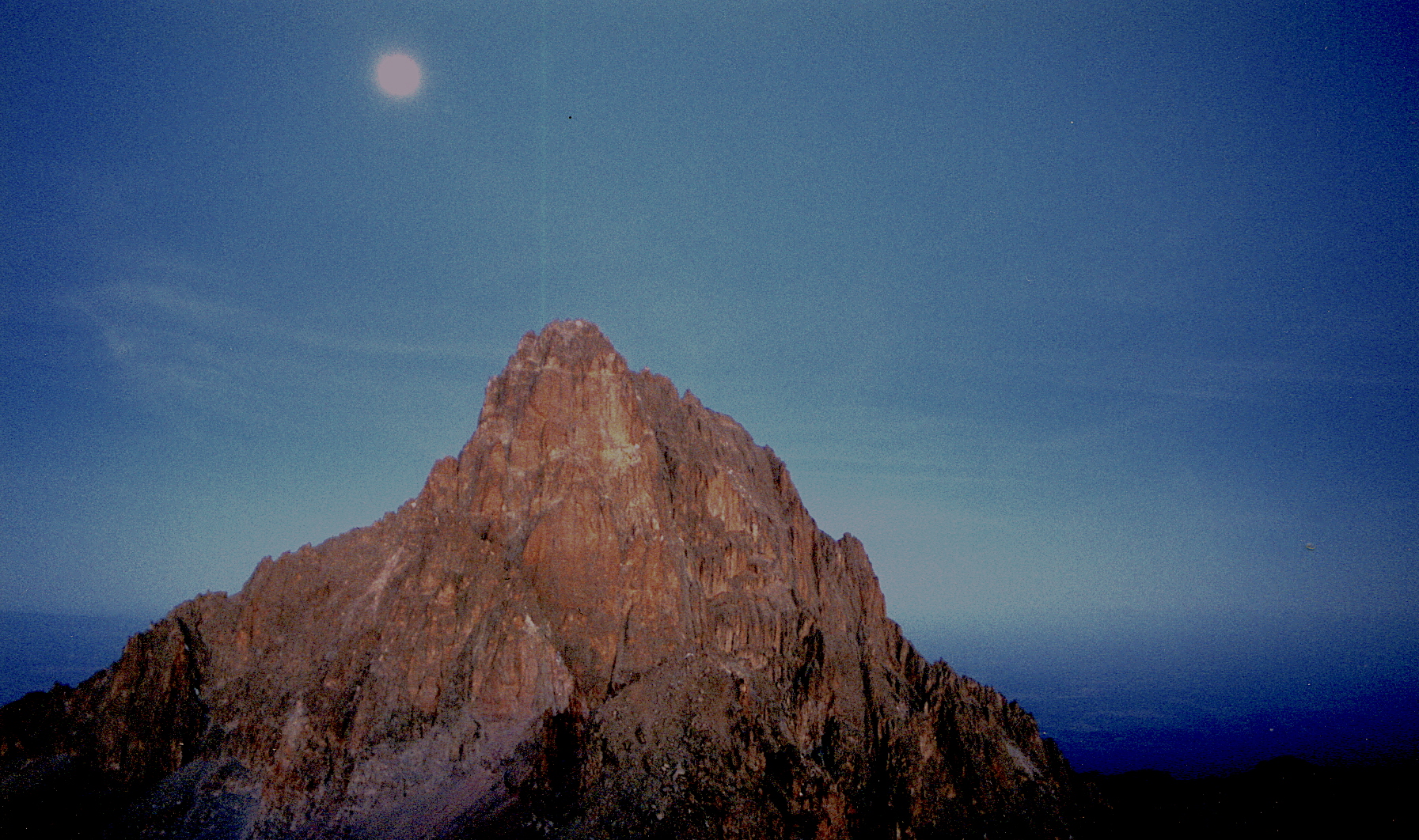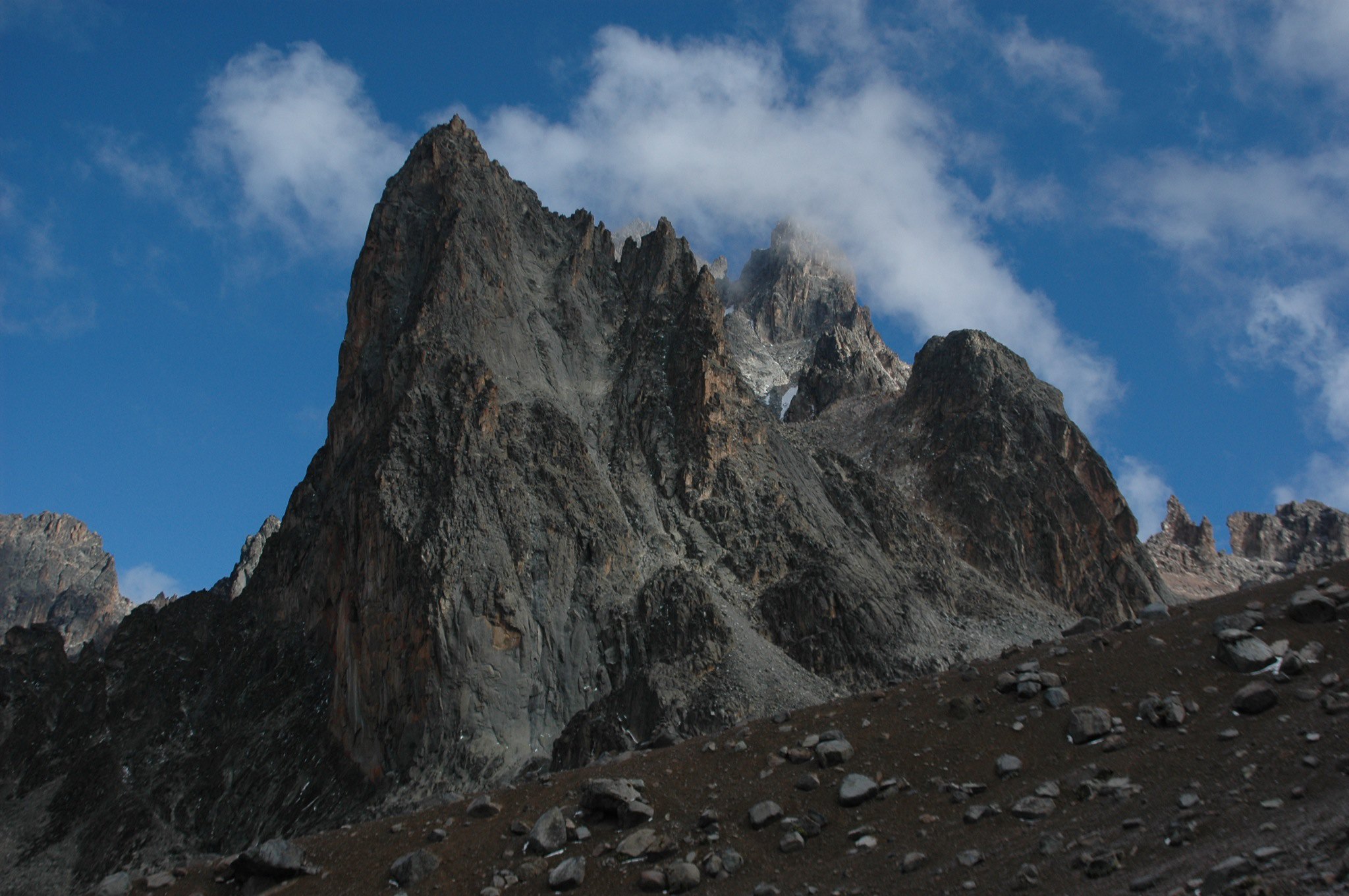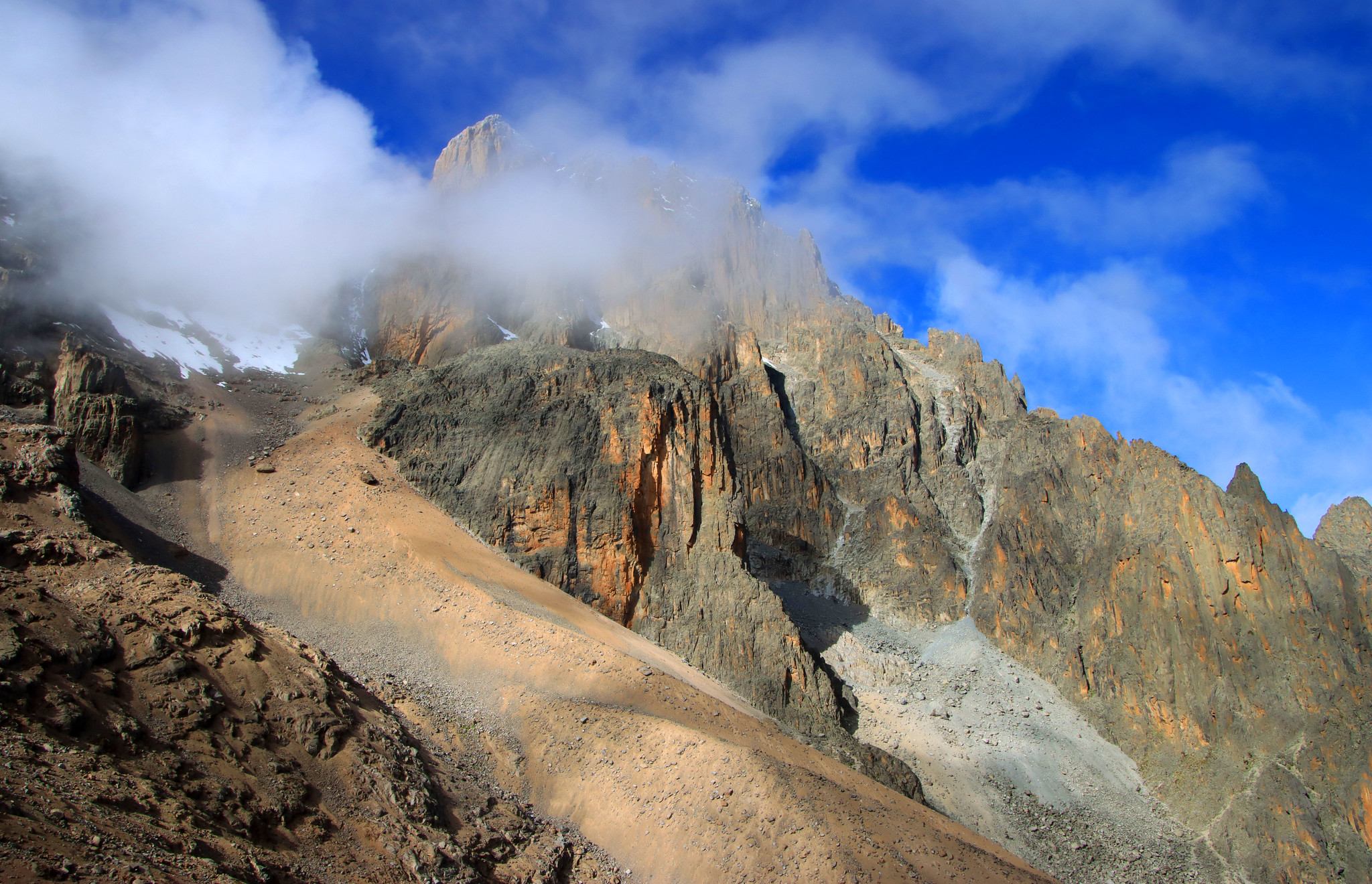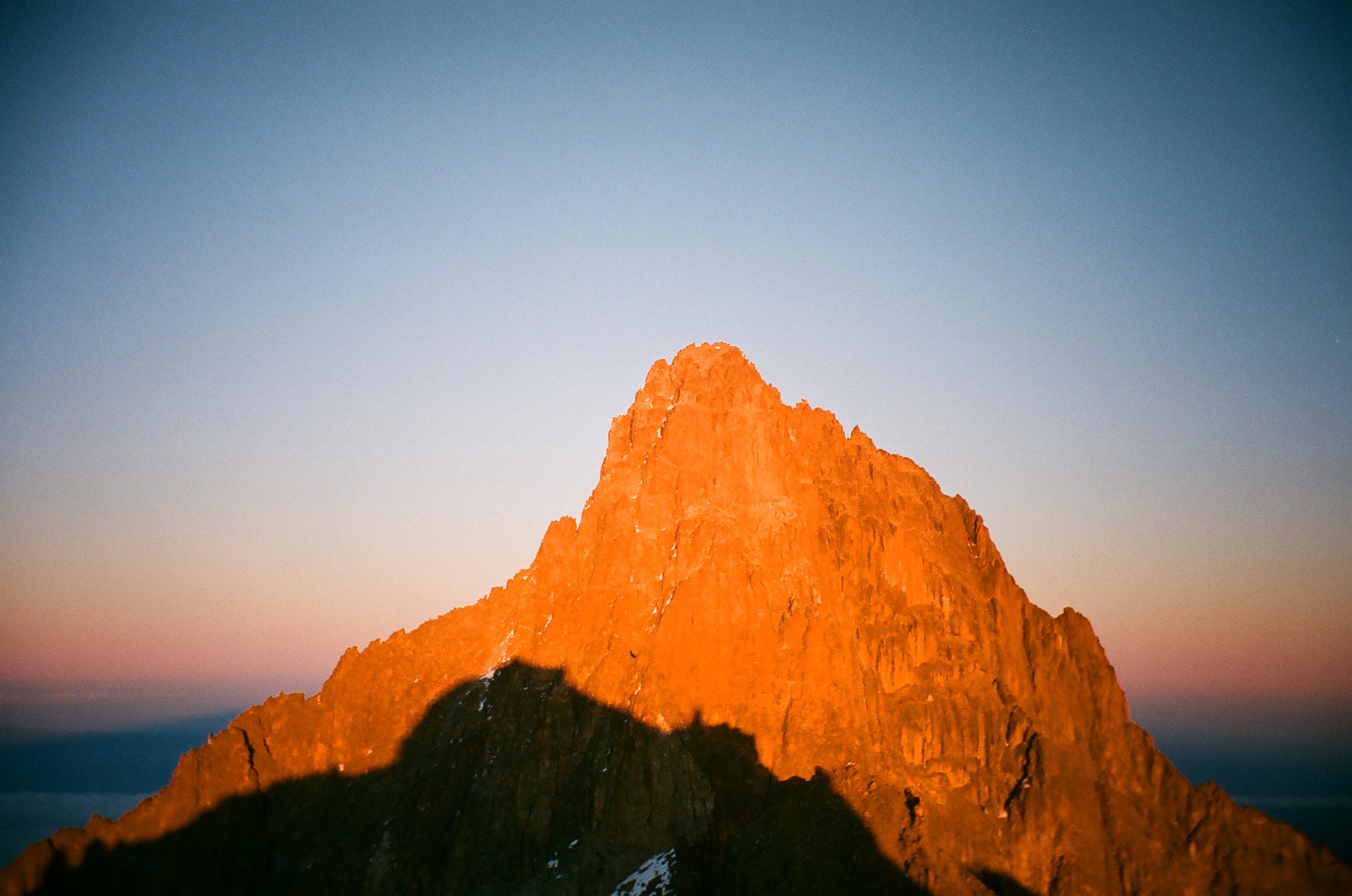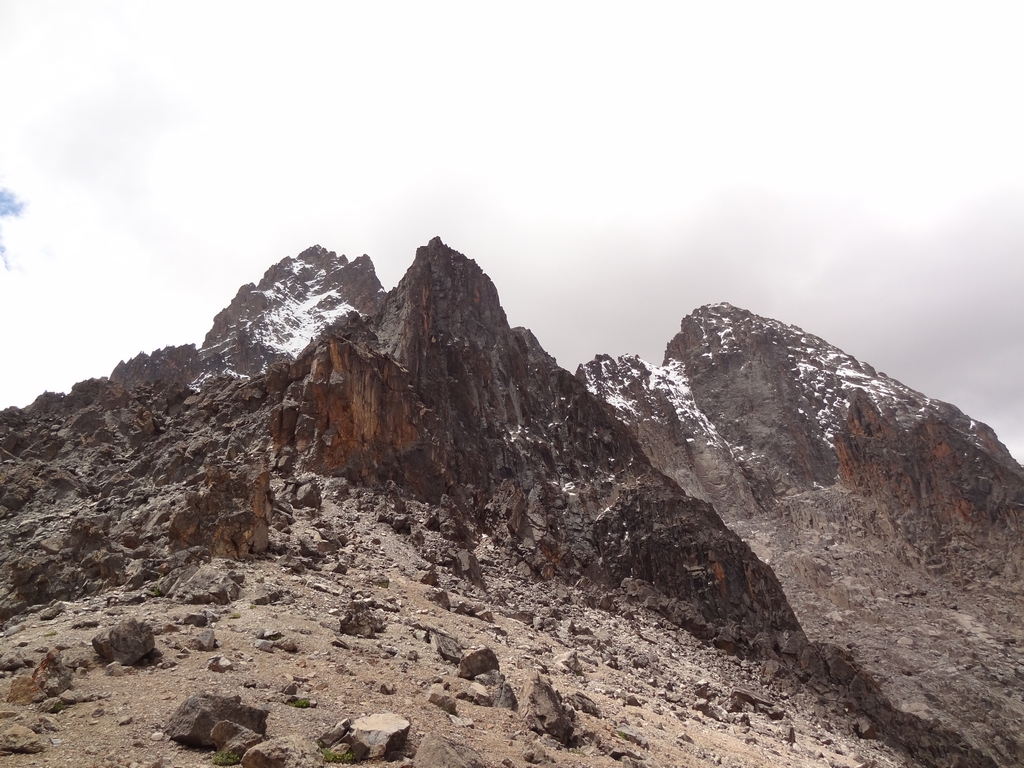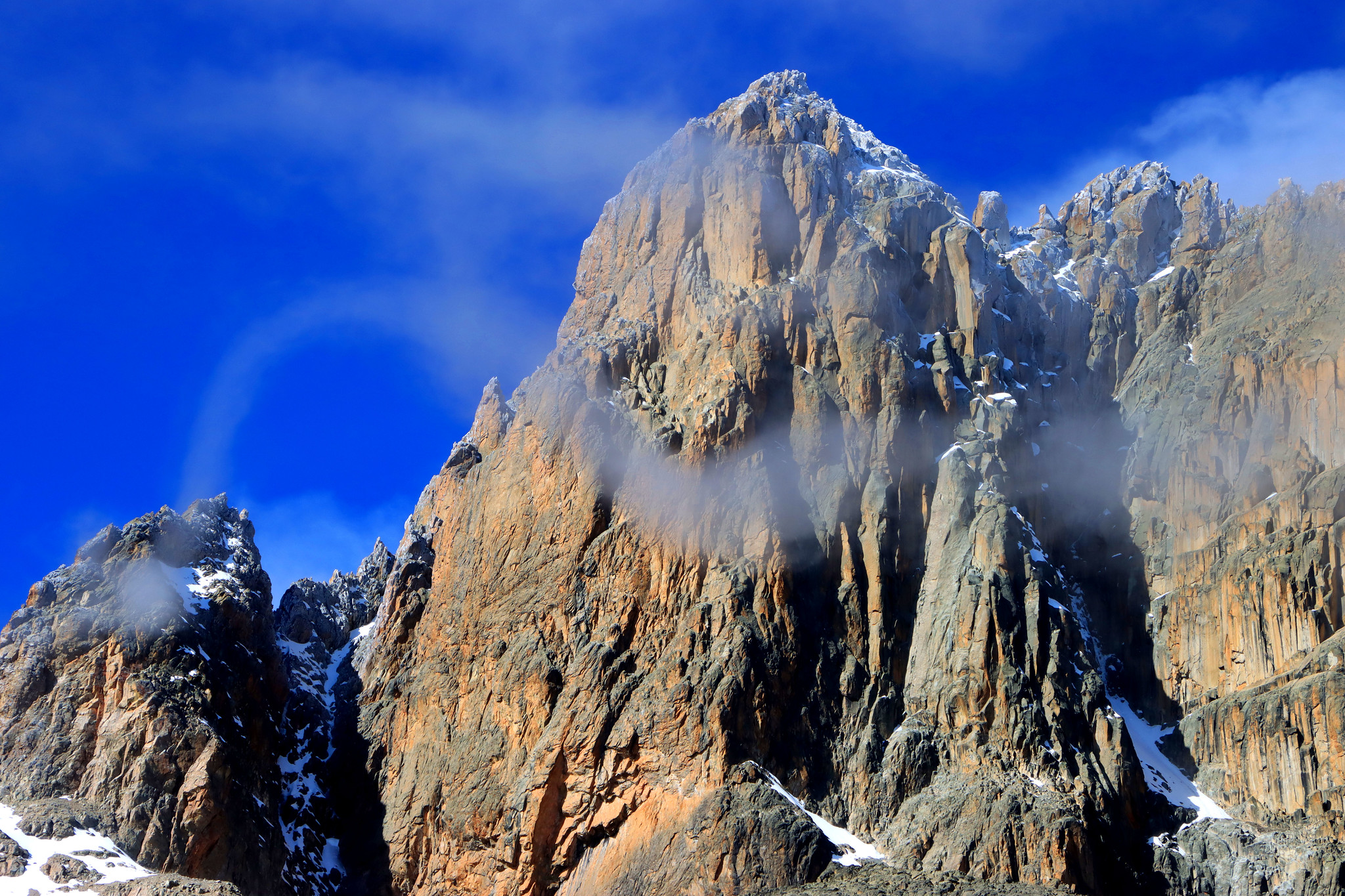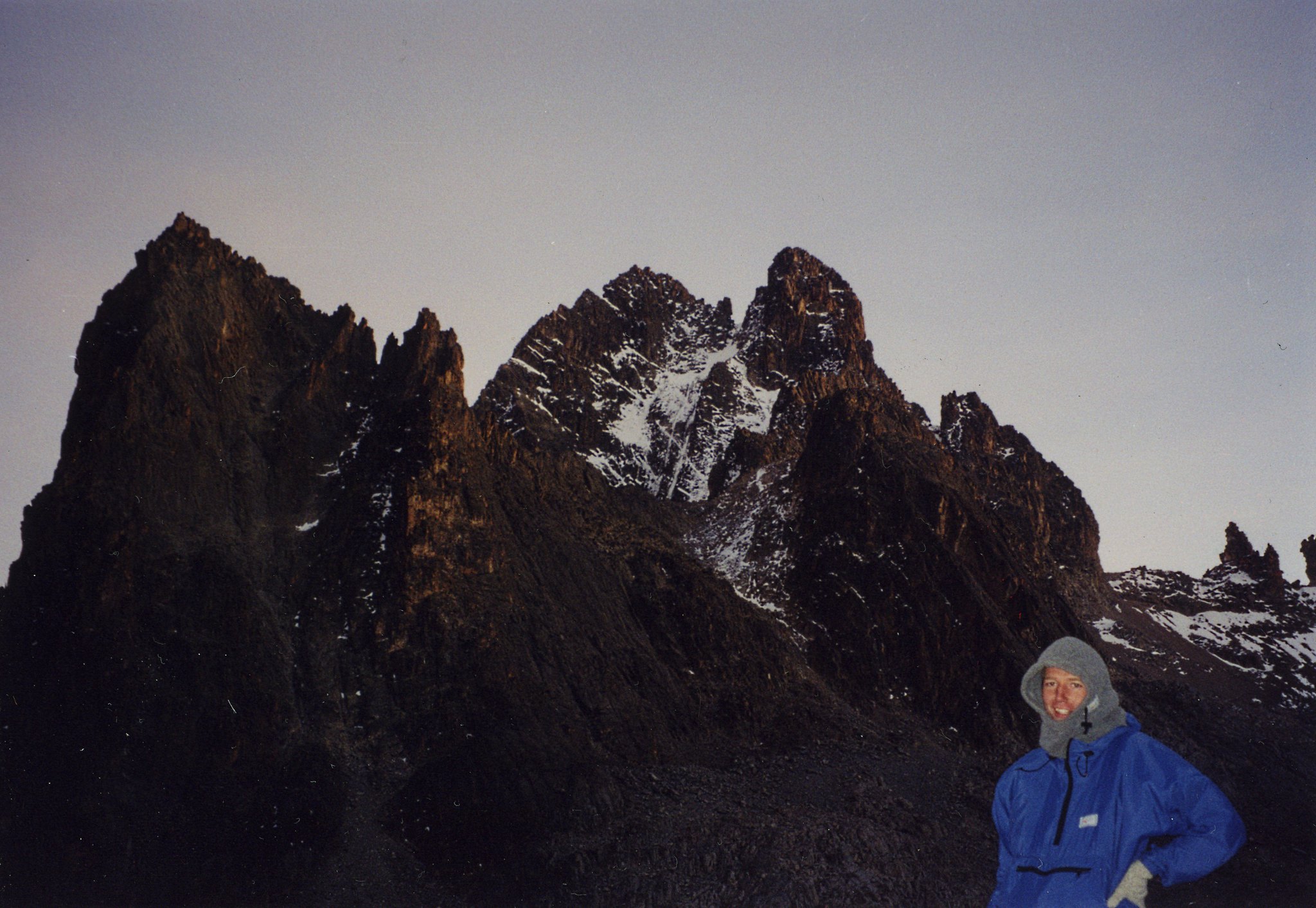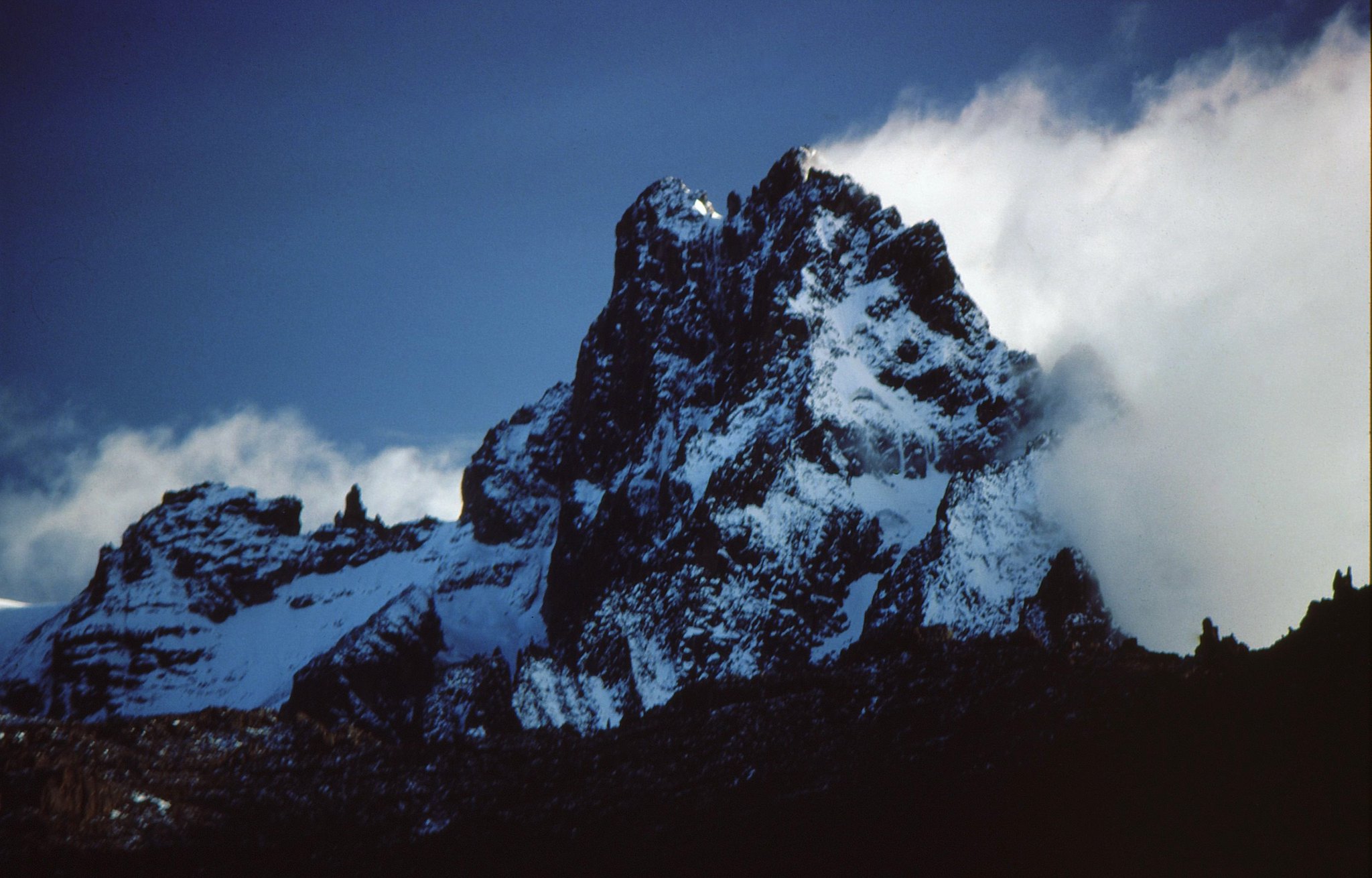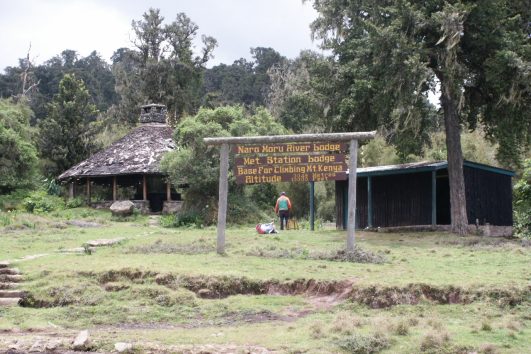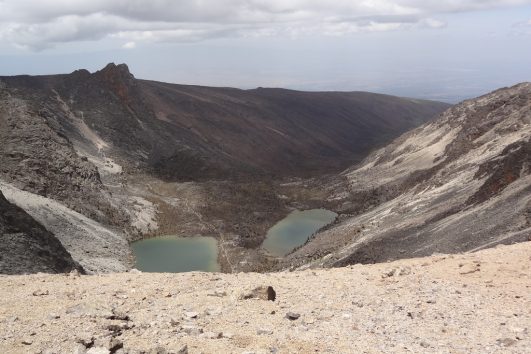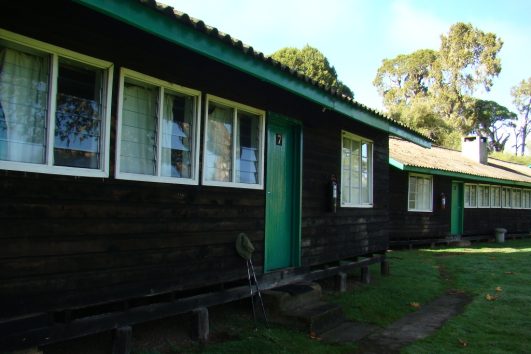Nelion Peak Elevation / Altitude: 5,188 m above sea level.
Nelion stands proudly as the second-highest peak of Mount Kenya, nestled close to its towering counterpart, Batian. The two peaks are separated by the Gate of Mists, adding an aura of mystique to their proximity. Nelion is a popular destination for experienced climbers seeking a challenging ascent, with technical routes and breathtaking views from the summit. Its distinctive rocky spires and rugged terrain make it a formidable yet rewarding climb for those willing to take on the adventure. Despite its impressive stature, Nelion remains a less frequented destination for climbers, largely due to the demanding technical skills required for ascent, often categorized as fourth-class professional rock climbing.
Unlike Batian Peak, Nelion boasts a relatively spacious summit area, where a small metallic hut known as Howell’s Hut provides a welcome resting spot for weary climbers. Constructed by renowned mountaineer Ian Howell, this humble shelter serves as a refuge for climbers preparing to ascend Batian or descend from its challenging heights. Some opt to spend the night here, while others use it as a brief respite before continuing their mountaineering endeavours.
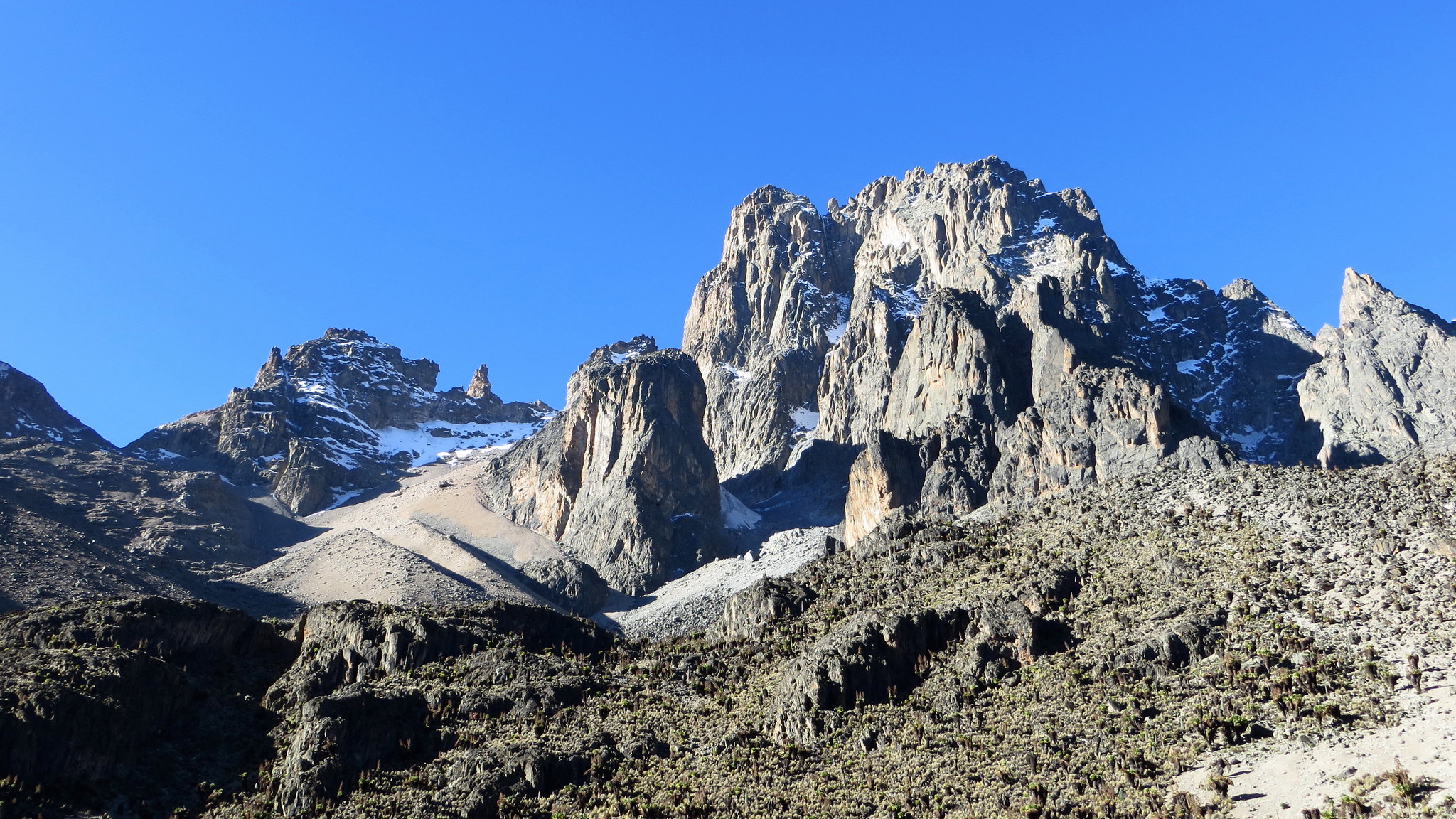
Accessing the base of Nelion is possible via any of Mount Kenya’s climbing routes. Once there, climbers typically favour the southeastern face, which offers a preferred rock climbing route closest to Point Lenana. This proximity allows adventurous climbers to potentially conquer both Point Lenana and Nelion in a single expedition, maximizing their mountain experience.
From the summit of Nelion, breathtaking vistas unfold, revealing the sprawling lowlands, shimmering tarns, tranquil lakes, verdant valleys, and neighbouring peaks shrouded in ethereal clouds. Despite its lofty elevation, Nelion’s barren landscape is devoid of vegetation or wildlife, save for occasional glimpses of resilient flora clinging to the rocky crevices.
Nelion’s location at the heart of Mount Kenya positions it less than a kilometre southeast of Batian, and just under ten kilometres south of the equator. Despite its proximity to the equator, Nelion’s lofty elevation ensures a perpetual snowfall and a near-constant shroud of mist enveloping its summit and the nearby Gate of Mists.
Ascending Nelion offers climbers a choice: continue onward to Batian or descend to the base of the rock tower. The journey to Batian typically entails traversing the mystical Gate of Mists, followed by a challenging rock climb to the summit. Climbers embarking on this formidable endeavour often choose to spend at least one night at Howell’s Hut, ensuring they are well-rested and prepared for the arduous ascent and optional descent.
Route Details and Climbing Conditions to Nelion
After acclimatization on either the Naro Moru or Sirimon route, climbers embark on the technical climb of Nelion, typically completed in one long day comprising 18 to 20 pitches. For those preferring a more leisurely pace or looking to maximize their summit experience, bivouacking in the Howell Hut atop Nelion is an option, allowing for a memorable overnight stay before descending.
The best months for summiting Nelion are generally from December to March when favourable weather conditions prevail, offering dry and stable climbing conditions. However, climbers should always be prepared for rain, snow, and wind, making it essential to carry lightweight warm sleeping gear and snacks for sustenance during the climb.
Technical Aspects of Nelion Climb
The crux of the climb on Nelion is rated UIAA IV- or equivalent to UK hard severe or American 5.5, although the altitude may elevate the perceived difficulty level. Most passages range from II-III or Diff/V Diff, providing varying challenges for climbers of different skill levels. The preferred climbing route, De Graaf’s variation, offers a slightly less exposed yet equally exhilarating ascent, with excellent protection and strategic bolt placements.
Descent and Challenges
The descent from Nelion involves a series of abseils, following a slightly different line than the ascent and utilizing bolted rings in the rock. Climbers must demonstrate competence in unassisted abseiling and be fully acquainted with descender devices. While the descent can typically be completed with eight abseils, guided climbs may require up to thirteen, ensuring a safe and controlled return journey.
Crossing the Gates of Mist to Batian
For experienced climbers, the possibility exists to cross the fabled ‘Gates of Mist’ from Nelion to Batian Peak. This demanding route requires careful preparation and is best attempted in optimal conditions, with ample time for ascent and descent. Bivouacking in Howell’s Hut is recommended for those undertaking this challenging traverse.
Best time to climb Nelion Peak
Mount Kenya experiences rain and snow throughout the year, with peak rainfall occurring from March to May and slightly reduced precipitation from October to December. The driest period on the south side of the mountain is typically from late December to February, offering stable weather and excellent climbing conditions. However, snowfall can still occur at higher elevations during this time.
Route Description and Summit Day
The ascent of Nelion begins from Austrian Hut, a brief hike across the Lewis Glacier to the base of the route at 4800m. Climbers can expect a challenging yet rewarding climb lasting between 6 and 9 hours, with additional time required for those crossing the Gate of the Mists to Batian. The route consists of 15 to 20 pitches, ranging from scramble to UIAA IV+, with the altitude and length of the climb presenting formidable challenges.
History of Nelion Peak
Mount Kenya holds a rich historical legacy, intertwined with the cultural heritage of the region. Nelion was first conquered by Eric Shipton whom the Shipton’s Camp was named after and Percy Harris in 1929, marking a significant milestone in mountaineering history. The Mountain Club of Kenya, along with pioneering climbers such as Ian Howell and Iain Allen, has played a pivotal role in developing climbing routes and preserving the natural beauty of Mount Kenya for future generations. Their contributions continue to inspire and guide climbers to this day.
Nelion Peak Itinerary
Here’s a suggested itinerary for climbing Nelion Peak on Mount Kenya:
Day 1: Transfer to Sirimon National Park Gate and Trek to Old Moses Camp
- Begin your journey with a transfer from Naro Moru town to the Sirimon National Park Gate.
- Start trekking towards Old Moses Camp, where you’ll spend your first night.
Day 2: Trek from Old Moses Camp to Shipton’s Camp
- Continue your trek from Old Moses Camp to Shipton’s Camp, immersing yourself in the stunning scenery along the way.
Day 3: Acclimatization Hikes and Rest & Relaxation at Shipton’s Camp
- Take the day to acclimatize to the altitude and explore the surrounding area with short hikes.
- Enjoy some rest and relaxation at Shipton’s Camp to prepare for the climb ahead.
Day 4: Trek from Shipton’s Camp to Point Lenana and Austrian Hut
- Begin your trek from Shipton’s Camp towards Point Lenana, the third-highest peak of Mount Kenya.
- Continue on to Austrian Hut, where you’ll spend the night in preparation for the climb.
Day 5: Climb Day: Austrian Hut to Nelion Peak and Return to Austrian Hut
- Embark on the climb from Austrian Hut to Nelion Peak, the second-highest peak of Mount Kenya.
- Reach the summit of Nelion Peak and soak in the breathtaking views from the top.
- Descend back to Austrian Hut for a well-deserved rest.
Day 6: Second Climb Day
- Use this day for a second climb or additional exploration of the area surrounding Austrian Hut.
Day 7: Trek from Austrian Hut to Lake Ellis and Nithi Falls
- Trek from Austrian Hut to Lake Ellis, enjoying the natural beauty along the way.
- Continue on to Nithi Falls, where you’ll spend the night.
Day 8: Trek from Nithi Falls to Meru Bandas and Transfer to Chogoria Town, then Embu
- Trek from Nithi Falls to Meru Bandas, where you’ll meet for a 4×4 transfer to Chogoria town.
- Transfer to Embu, marking the end of your Mount Kenya adventure.
Feel free to adjust the itinerary to suit your preferences, and consider adding a safari experience at Ol Pejeta Conservancy for an unforgettable journey in Kenya.

